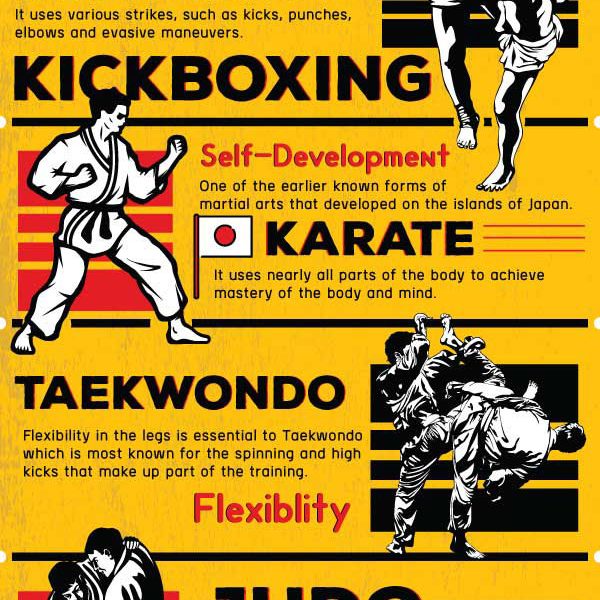The Background And Philosophy Of Martial Arts: A Deep Dive
The Background And Philosophy Of Martial Arts: A Deep Dive
Blog Article
Learn Even more Here -Gentry Francis
Step into the ancient globe where martial arts were born out of necessity in diverse areas. Cultures crafted unique fighting styles intertwined with historic contexts. Strategies advanced over centuries via devoted method and cultural exchanges. Today, modern-day martial arts blend traditional aspects for maximum performance. Philosophically, martial arts highlight self-control, self-improvement, and harmony. Regard, humility, and equilibrium are foundational principles guiding practitioners towards growth and strength. Explore the depths of this rich background and ideology to discover the extensive impacts forming this enduring discipline.
Beginnings of Fighting Style
Fighting style originated in various areas around the globe, advancing as practical combat systems to defend against risks. These ancient fighting designs were established out of necessity, with each society crafting strategies fit to their one-of-a-kind environments and obstacles. From the grappling arts of Jujutsu in Japan to the striking strategies of Martial art in China, martial arts were deeply intertwined with the historical, social, and social material of their corresponding societies.
In Japan, the samurai course refined martial arts like Kenjutsu, the art of the sword, which later on evolved into the a lot more promoted type of Kendo. At the same time, in Brazil, Capoeira emerged as a blend of dance and battle, produced by enslaved Africans as a way to resist oppression. Each fighting style brings with it a rich background and approach, showing the worths and ideas of the people who exercised them.
As you delve into the beginnings of martial arts, you discover a tapestry of human ingenuity, resilience, and the unrelenting spirit of warriors throughout time.
Development of Techniques
Through centuries of technique and refinement, battle strategies within different martial arts have actually gone through an extensive development. From old styles like Kung Fu and Martial arts to much more modern-day disciplines such as Brazilian Jiu-Jitsu and Krav Maga, the advancement of strategies has been driven by a mix of cultural influences, useful applications, and technological innovations.
One substantial aspect of this advancement is the cross-pollination of techniques between different martial arts. As an example, strategies from conventional Japanese Jiu-Jitsu were incorporated into the creation of Judo by Jigoro Kano in the late 19th century. This mixing of styles has led to the development of crossbreed martial arts like Mixed Martial Arts (MMA), which integrate elements of striking, grappling, and entry strategies.
Moreover, the evolution of methods has been shaped by the boosting focus on efficiency and efficiency in battle. Professionals have continuously looked for to refine their methods through extensive training, testing, and competition, causing the advancement of highly specialized and efficient combating styles. Overall, the development of techniques in martial arts reflects the vibrant nature of fight and the recurring quest for renovation and advancement.
Philosophical Structures
Exploring the underlying thoughtful concepts of martial arts provides understanding into their core values and leading ideas. At the heart of many martial arts techniques is the idea of technique itself. By educating your mind and body to act as one cohesive device, you grow self-control that expands beyond the dojo or fitness center into daily life. This discipline includes regard, humbleness, and self-constraint, forming not simply your physical abilities yet likewise your personality.
Another basic thoughtful foundation in martial arts is the concept of continual self-improvement. mix martial art near me of understanding a fighting style is endless, with practitioners frequently aiming to better themselves, both literally and mentally. This focus on development fosters resilience, perseverance, and a development attitude that can be put on all facets of life.
Furthermore, martial arts stress the importance of consistency and equilibrium. Strategies are created to utilize an opponent's power versus them, highlighting the principle of generating and rerouting force instead of meeting it head-on. This approach encompasses interpersonal relationships, advertising tranquil resolutions and good understanding. By welcoming these philosophical structures, martial artists not just enhance their battle skills however additionally cultivate a lifestyle fixated personal development, respect, and harmony.
Conclusion
In conclusion, the background and approach of martial arts supply an abundant tapestry of practice, self-control, and self-improvement.
Take for example the story of Bruce Lee, who transformed martial arts by mixing various styles and approaches to create his own special type of Jeet Kune Do.
Via dedication and innovation, martial artists continue to push borders and influence others to reach their complete potential both in battle and in life.
